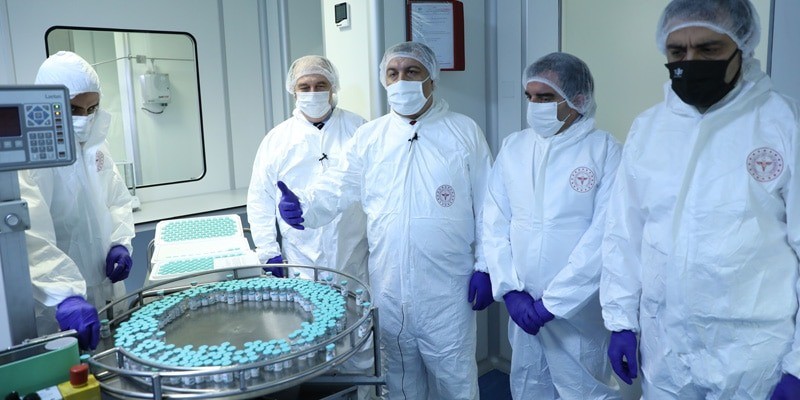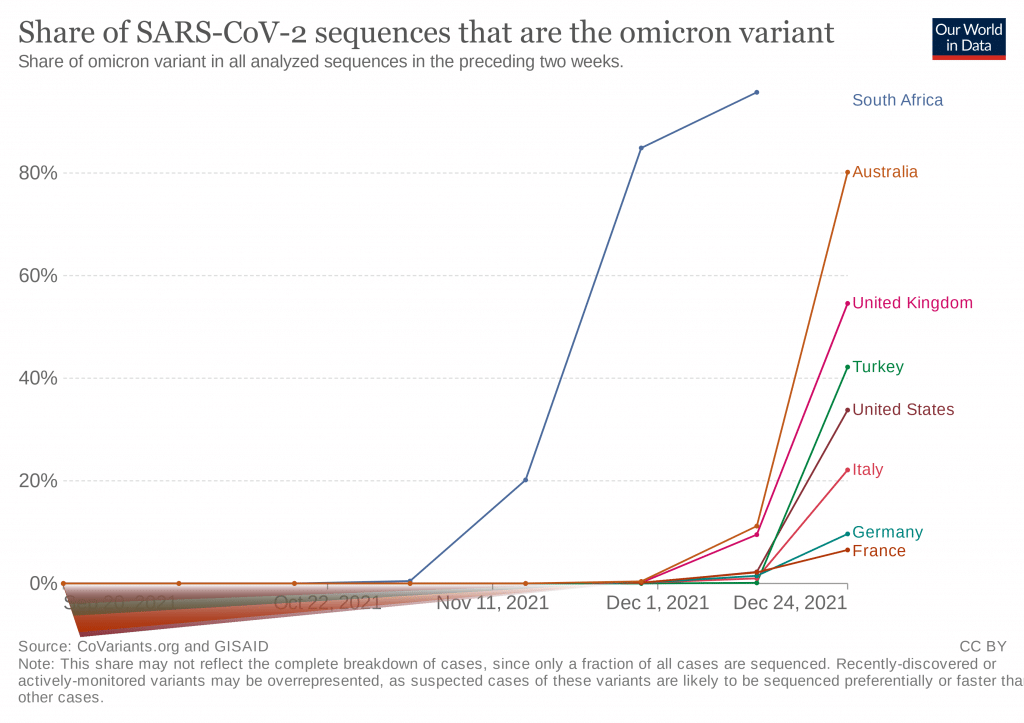

The Covid 19 Omicron wave shakes the world, especially Europe. Although Christmas and New Year celebrations in Europe are one of the most important events for both individuals and businesses, many countries have taken strict measures. On Friday, the head of the World Health Organization, who has been diligent in respecting member states’ sovereign rights and reluctant in recommending direct measures, said: “celebrations should be cancelled.”
In Turkey, except for the anxiety brought it by turmoil in financial markets, daily life run as usual. No special measures have been taken for the Omicron wave, and it looks unlikely that there will be any. President Recep Tayyip Erdoğan reminded the first lockdown period in 2020 and said that the opposition forced the government to slow down the economy. Official numbers for infections and Covid deaths have been around the same fixed number for nearly a month. Minister of Health Fahrettin Koca also set the number of Omicron cases to six cases. The end of November, the number was six.
What happened to these six cases? We hope that they got better. No reports of contacts, and any outbreaks being traced around those contacts. Finally the Minister announced on Twitter on December 25 that Omicron cases account for 10 percent of the new cases in the big cities of Turkey.
Reporting 10 percent to citizens , 42 percent to international bodies
Number of people that amounts to an entire plane dies every day. The countries in Europe we have close contacts with are reporting the highest number of cases since the beginning of the pandemic. Taking advantage of holidays, planes full of people from these countries arrive in Turkey, and cross the border, and it is not possible to say that they are checked meticulosly. One keeps wondering how Omicron transmission been as low as Minister has reported?
When it comes to matters of data sharing The Ministry of Health has not been very generous since the beginning of the pandemic. We have repeatedly written about how the official numbers of infected cases are distorted, and that the official death numbers reflect only part of the truth. Public has never had access to data on age, gender, residential area of infected cases and deaths. Genetic sequence analysis of variants, their prevalence etc. have not been properly disclosed to the public. Therefore it is hard for citizens and even professional organizations and public health people, even those working to control pandemic to have a full picture of the Covid in the country.
Our World in Data on Omicron
As as result people created their own ways of following the pandemic. A handful of volunteers, digging into public sources, reading between the lines, and putting together pieces of a puzzle with perseverance and sharing their findings through social media helped us understand what is happening around us, and the direction virus takes. Mr Zeki Berk, an industrial engineer devoted to developing charts and checking for discordance in official figures is one of these volunteers. On his Twitter account, on December 25, he drew attention to a chart in a the Our World in Data website. Our World in Data is a platform that gathers official information worldwide, publishes them transformed into charts, maps, etc that could be understood by public. According to the website, 42 percent of the new Coronavirus infections reported from Turkey during the last two weeks were identified as Omicron variant.

Our World in Data is a platform established by world-renowned “data experts”, mostly from Oxford University and other Universities in the UK. They collect and update data in many fields like the economy, population movements or health from the most reliable sources and publish them.
This platform refers the GISAID as the information source for the Omicron variant numbers. GISAID runs a similar data platform supported by German government, and several other donors. Their primary focus is influenza and the COVID virus. As can be understood from their website GISAID collects COVID virus genetic sequence reports from countries and shares them with researchers and public. According to the data table on the site, Turkey’s Ministry of Health Laboratory submitted its report on December 25 2021, signed by its experts. According to this report, 42 percent of the COVID infections detected in the last two weeks in the country were Omicron variant.
Stay away from New Year’s Eve parties
If not clarified by the official sources, as of December 25, the laboratory of the Ministry appears to report to GISAID that 42 percent of the new cases were Omicron variant. However, on the same day, the Minister of Health announced on Twitter that 10 percent of the new cases in our big cities were due to Omicron.
Put aside the bad communication of reporting on something as important as Omicron transmission by a single tweet. Unfortunately we have become accustomed to this attitude. But what about announcing a drastically reduced rate of Omicron to Turkish public, in discordance with official reports to international platforms? No heart to joke, but one can only say they have used the same divisor they use when reporting the number of Covid deaths.
That is all I can say about the progress of pandemic based on limited data available to public. It is not a complete picture, but at least take it as warning to stay away from public gatherings and cancel New Year parties.


